Eating & Sipping in France
Provençal Countryside
The day after our exploration of Avignon our weather luck ran out. Big time! The program promised: "This morning you will have the opportunity to visit rural Provence and breathe in the country air at the beautiful family gardens of Jardin aux Abeilles." I'm sure it was beautiful, but we never saw it. And breathing too deeply would have resulted in drowning!
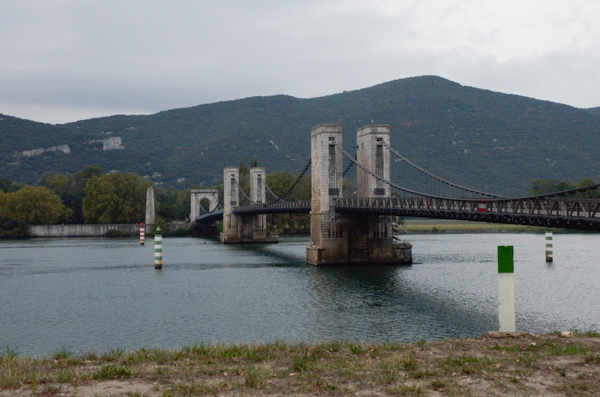
The day didn't start too badly. It was threatening, but we were hopeful.
As we drove to our first scheduled stop, we crossed the Pont du Robinet over the Rhône downstream of Viviers. It was completed in 1847 to replace an earlier ferry at the same spot. We clamored to stop and take pictures.
Marc Sequin designed and built the first (temporary) wire-cable suspension bridge in 1822. (Earlier designs used chains instead of cables.) This bridge was constructed using his techniques.
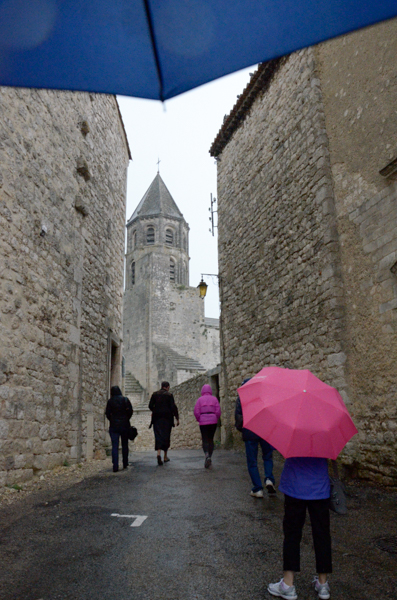
Our first destination was La Garde Adhémar, a fortified village at the top of a rocky outcrop. The village would have been charming, I'm sure, but it was raining.
The Eglise Saint-Michel is a well-preserved Romanesque church built in the 12th century and restored in the 19th century. It is unusual in that the apse faces west instead of east. We were not only hoping to see the interior of the church, but also to escape the rain. Exceptionnellement it was closed today!
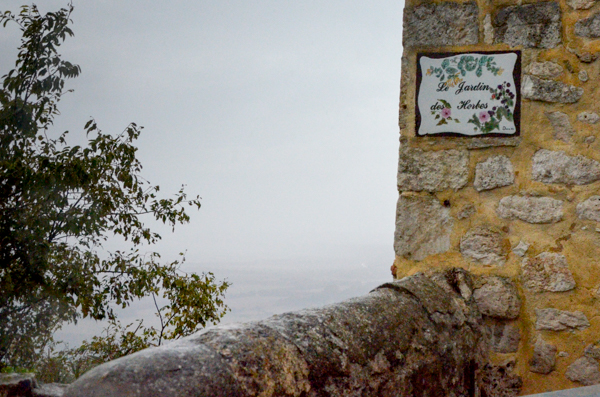
Opposite the church was a stunning view (we were assured) of the surrounding countryside. There was also a small herb garden.
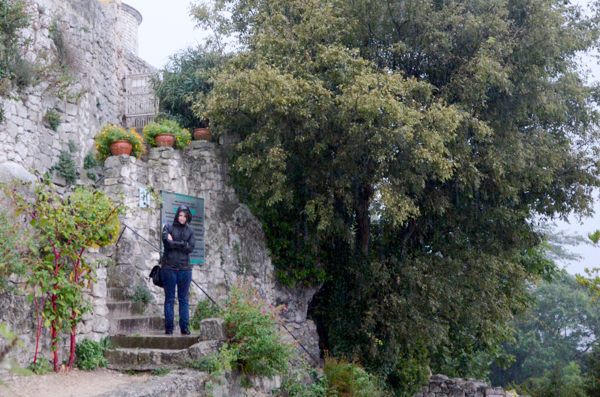
We did our best to soldier on in the rain and tour the bedraggled garden, which would have been interesting and beautiful on a brilliant day, but the downpour eventually overwhelmed us.
My sworn enemy, pokeweed, with its tall red stalks, had a proud place in this garden -- for its medicinal properties. If it doesn't kill you first.
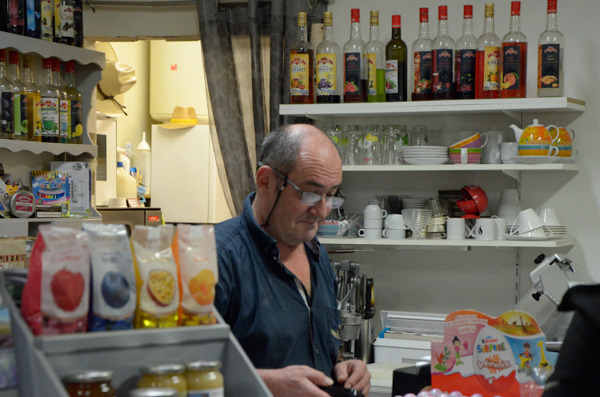
In desperation we squished into a local grocery for hot drinks and cookies. The proprietor was very gracious as we steamed up his shop while discussing Plan B. He offered stronger warming potions, but it was too early in the morning for that -- however tempting.
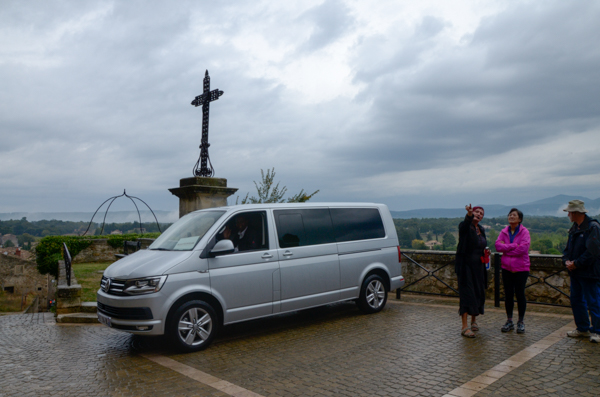
By the time we reached our alternative destination, the Château de Grignan, the rain had dwindled to drizzle and it was clearing up enough to see the surrounding countryside.
This is the only picture I have of our trusty van, which slipped through many tight places under Mouhi's expert guidance.
Our local guide had not checked the weather forecast and didn't bring either a raincoat or an umbrella. She was soaked to the skin before she accepted an umbrella from Marilyn, who had a backup raincoat with hood.
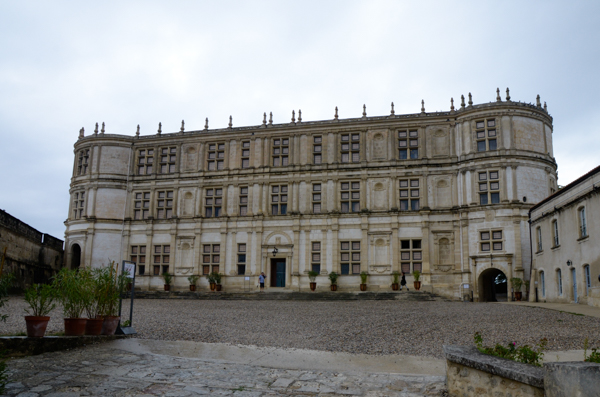
The château, also associated with the Counts of Adhémar, was a good haven in the storm. It had a romantic history: conversion from a medieval fortress into a Renaissance château, destruction during the French Revolution, and restoration in the early 20th century. It was interesting, and most importantly, out of the rain.
This is the Renaissance entry with its symmetrical facade.
Pictures inside showed the extent of the deterioration when Mme. Fountaine began her restoration. She had a vision that transcended all rational consideration!
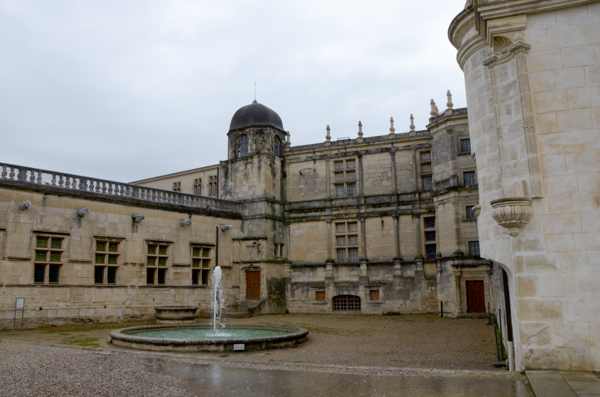
The original entry, around the corner to the left of the above picture wasn't deemed grand enough for the Counts' "pleasure palace."
One facet of our visit here was that, exceptionnellement, our guide was allowed to take us through. There are strict rules in France about what guides can say and where they can say it. More than once we had a guide tell us that she was not allowed to speak in such-and-such a place. Our local guide, however, had once worked here and had maintained good relationships with the folks in charge so they graciously made an exception for us. I expect there may also have been an element of "if these Road Scholars like it, you may get put on the standard tours."
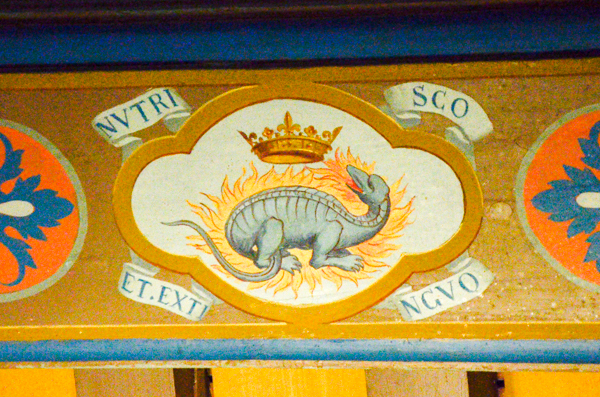
Onw big event in the history of the château had been a visit from Francis I of France. His emblem was a salamander nesting in flames. Lore had it that the salamander could withstand flames and even put out fires by the coldness of its skin.
The motto surrounding the image is: Nutrisco et extinguo or "I nourish [the good] and extinguish [the bad]."
The Count of the day painted the emblem on the beams of one of the château's rooms in honor of Francis' visit.
Another notable figure associated with the château was Marie de Rabutin-Chantal, Marquise de Sévigné. Her daughter Françoise married François Adhémar de Monteil, Comte de Grignan. Mother and daughter began a correspondence that established the marquise as one of the leaders in French literature of the day.
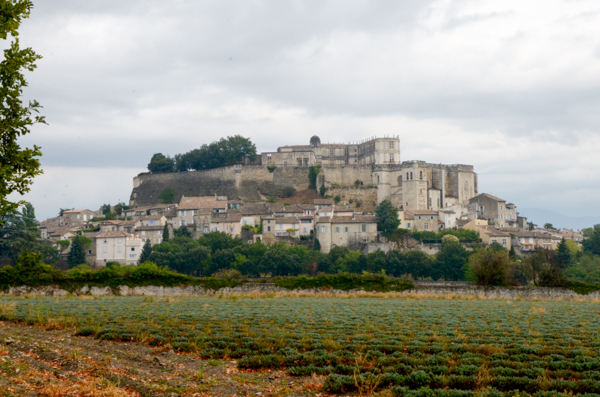
The fields below the château are lavender. It is a popular crop in Provence. There are many types of "lavender" but the commercial variety in Provence is lavandin, a hybrid. The flowers have already been harvested in this field.
As mentioned above, May and Marilyn were constantly on the search for lavender products to take home as presents for friends.
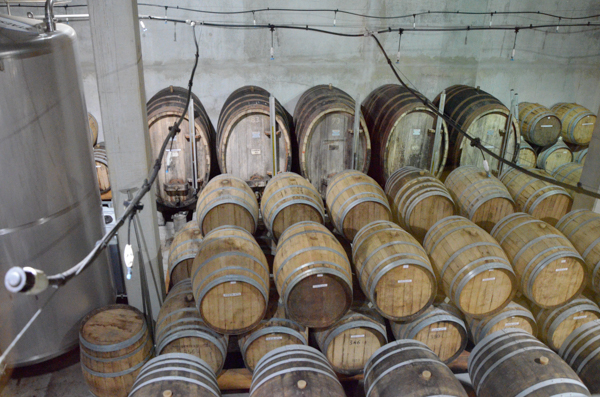
Our next indoor stop was Domaine Eyguebelle. Looking at those casks you might be tempted to think this is a winery. Nope; it is a distillery famous for making flavored syrups, cordials, and liqueurs.
The operation was initiated by Cistercian monks of the Aiguebelle Monastery in the 13th century, but in the late 20th century, it was "spun off" into a separate business.
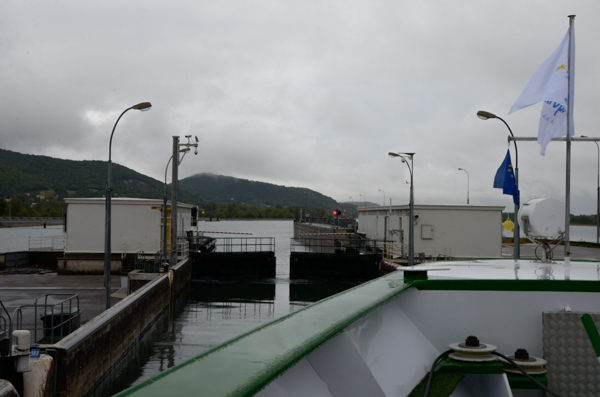
After our visit we returned to the ship to change into dry clothes and enjoy a lecture on truffles, the black diamond of Provence. We also passed through another lock. Rather than sliding doors, this one had hinged doors that swung open.
Truffles are farmed in Provence. Oak trees are inoculated with spores and planted in suitable locations. The information at the link describes a would-be truffle farmer and what s/he would need to do.
Truffle farms are often combined with lavender farms since they require the same growing conditions and soil.
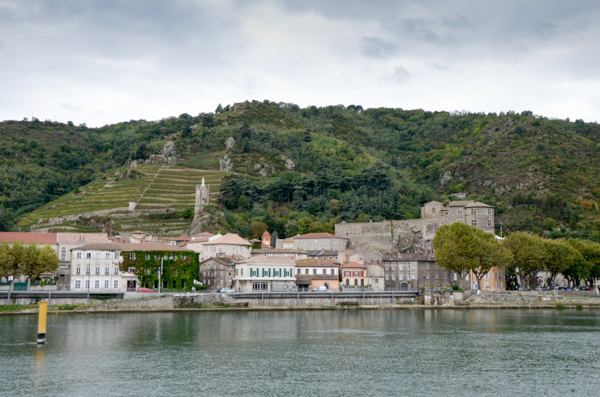
Our next stop was in Tain-l'Hermitage, where we went wine-tasting. Wines of the Hermitage appellation are generally priced beyond what we like to pay, so this was a treat.
This image is of Tournon-sur-Rhône on the other side of the river.
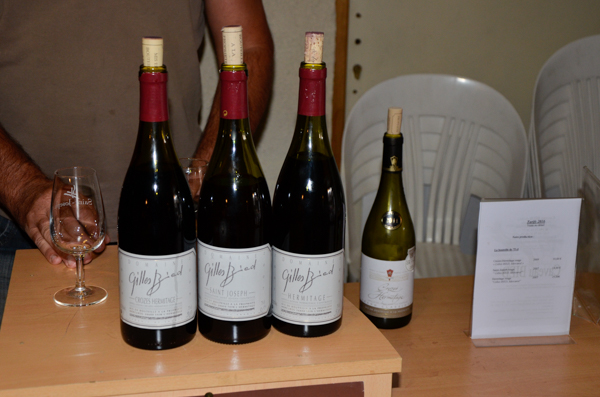
The winery where we enjoyed several wines is Gilles Bied. It was a very pleasant experience with the family offering us wine and canapés. And the chocolate was good too!
After our wine-tasting we had the option of strolling through town or returning to the boat. That evening we had a gala dinner and our final night aboard.
Click your "back" button to return to the previous page or click for our picture album.